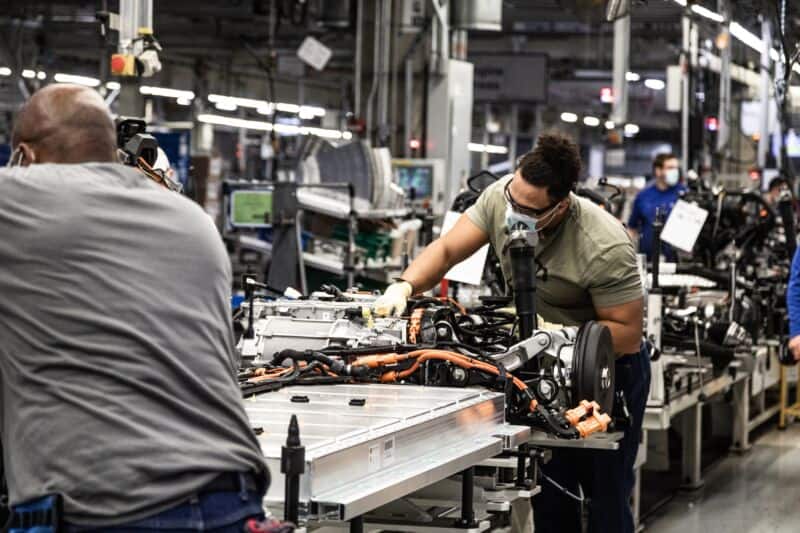The Inflation Reduction Act of 2022 passed the United States Senate on Sunday and heads to the House of Representatives, where it is expected to pass easily. It contains numerous changes to the tax code, meant in large part to prevent the worst effects of climate change.
Among these is a revision to the existing tax credit for new plug-in electric vehicles. As we detailed last week, the IRA introduces income caps for the tax credit, and it will only apply to sedans that cost less than $55,000 and other EVs that cost less than $80,000. The bill also drops the 200,000 vehicle-per-OEM cap on the tax credit, which would benefit both General Motors and Tesla.
At least it will if their EV batteries are mostly made within North America, with at least 40 percent of the materials used having been extracted and processed within North America or a country with a free trade agreement. Now, instead of being based on battery capacity, half the credit ($3,750) is tied to where the pack is made, and the other half its supply chain. And that will be a problem if you’re looking to buy an EV in 2023.
Automakers and battery companies are starting to build factories in North America. In addition to Tesla’s Nevada site, GM and LG Chem are building batteries in Ohio, with Ford and Volkswagen using SK cells made in Georgia. More plants are in the works: Ford and SK are building plants in Kentucky and Tennessee, to name a couple, with US battery plants also in the works at Stellantis and Volkswagen, among others. So some EVs may qualify for at least half the full $7,500 credit, depending upon how the value of the battery is determined.
“Ultimately, a lot will also depend on guidance that will have to be issued by IRS. At first glance, it appears that almost no cars will qualify, but some might end up squeaking in,” Sam Abuelsamid, principal research analyst at Guidehouse Insights, told Ars. Without knowing more, it’s impossible to be definitive about which EVs will qualify for at least $3,750, but the list may include the Ford Mustang Mach-E, the locally produced Volkswagen ID.4s, GM EVs that use its new Ultium cells, and Teslas that use cells from Nevada.
But it’s probably more straightforward regarding the other half of the credit. Even if these domestic battery plants increase the US’s share of battery manufacturing, at least 40 percent of the critical chemicals that go into those cells must be extracted and processed locally, a percentage which will escalate by 10 percent each year.
Right now, North America doesn’t have the ability to handle that production—about two-thirds of the world’s lithium, much of its cobalt, and almost all its graphite are processed in China.
Domestic recycling of lithium-ion batteries will provide one local source of battery materials, and the US contains lithium deposits that have yet to be exploited. Automakers like GM were already trying to source as much as possible locally, but globally there’s a race to secure contracts for future production, which might limit their choices.
Once the bill has been signed into law by President Biden, it’s up to the Secretary of Transportation Pete Buttigieg to issue guidance on how the new rules will be interpreted. That includes how one’s income will be determined in the case of a point-of-sale rebate and the manufacturing value of a battery.
That has to happen no later than the end of 2022, and there is no grace period once the guidance is issued. But if you have a binding contract to buy a new EV by the time the law is passed, but hasn’t been delivered yet, it should still qualify for the old tax credit.
“The manufacturing tax credits and grant funding will help accelerate the domestic industrial base conversion currently underway. Unfortunately, the EV tax credit requirements will make most vehicles immediately ineligible for the incentive. That’s a missed opportunity at a crucial time and a change that will surprise and disappoint customers in the market for a new vehicle. It will also jeopardize our collective target of 40-50 percent electric vehicle sales by 2030,” said John Bozzella, president and CEO of the Alliance for Automotive Innovation.

